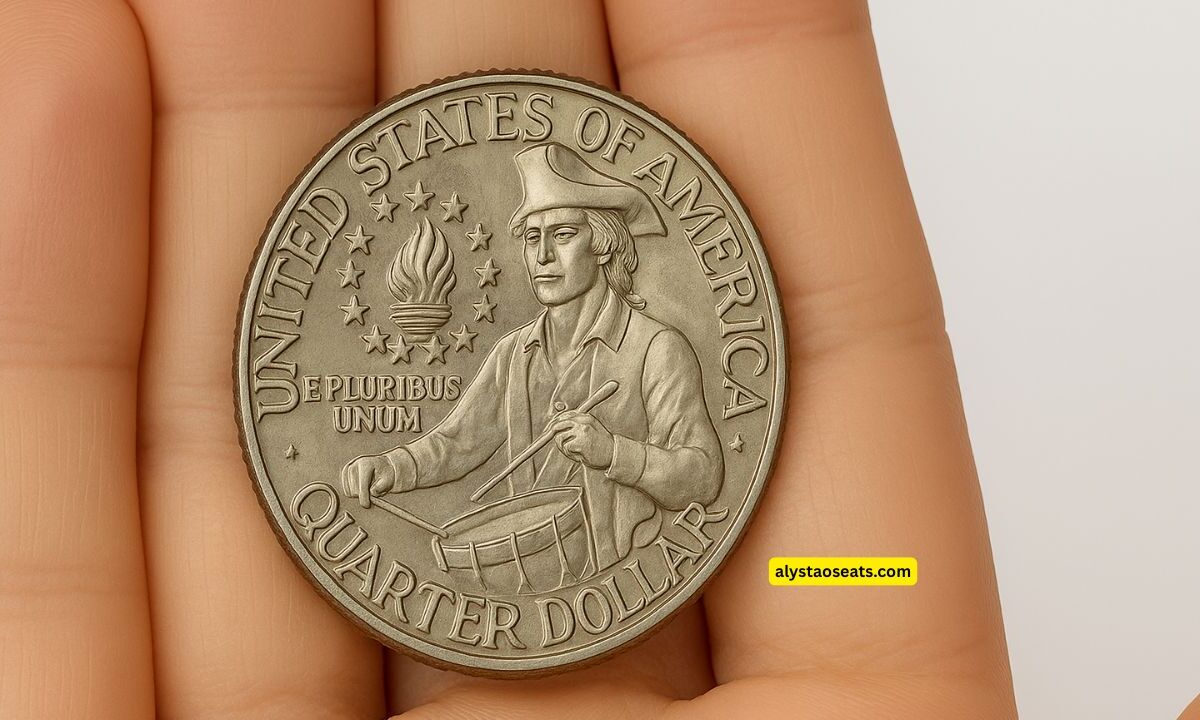A 1976 Bicentennial Quarter with no mint mark recently sold for close to $25,000, capturing the attention of coin collectors and investors alike.
This rare piece, struck on a wrong planchet, reflects the coin’s intriguing history, scarcity, and market value fluctuations.
This article dives into every detail and provides a comprehensive overview backed by the latest information online.
What Makes This Quarter So Special?
1. No Mint Mark (Philadelphia)
- Philadelphia Mint (no mint mark) produced billions of Bicentennial quarters dated 1776–1976, but only a handful exhibit striking errors.
- Most coins circulated normally at face value, but error coins without mintmarks are extraordinarily rare.
2. Wrong Planchet Striking
- The specimen was struck on an improper blank (coin planchet), possibly from another denomination or foreign blank.
- Size and weight anomalies, with partial design imprints, create extreme rarity. Only a few documented error coins like this exist.
3. Authentication & Grading
- Authentication by major grading services like PCGS or NGC is essential. High-grade authentication awarded this coin an exceptional status.
Record-Breaking Sale Details
- Sale Price: nearly $25,000
- Auction Date: Early June 2025 (within the past week)
- Condition & Rarity: Crowning factor in fetching this price—pristine preservation plus severe mint error.
Other Valuable Bicentennial Varieties
| Variant | Key Feature | Estimated Value Range |
|---|---|---|
| No Mint Mark (standard) | Regular circulation, no Mint mark | $0.25 |
| No Mint Mark (error strike) | Wrong planchet, Philadelphia, rare | $10,000–$25,000 (this coin) |
| 1976-D/Bicentennial D | Denver mint, no errors | Face value unless rare die error |
| 1976-S Silver Proof | 40% silver, proof finish, “S” mint mark | $3,000–$5,000+ |
| Double Die Obverse Error | Visible doubling on obverse inscriptions | $3,000–$25,000+ |
| Off-Center / Clipped Error | Misaligned strike or missing rim edge | $100–$2,000 |
Historical & Minting Context
- In 1975–1976, the US Mint issued commemorative coins to celebrate the nation’s 200th anniversary, all bearing the double date “1776–1976.”
- Circulating quarters were in copper-nickel clad; Philadelphia struck the unmarked coin variants.
- Over 1.67 billion quarters were minted: 809 million in Philadelphia, 860 million in Denver, and approximately 5 million in San Francisco (silver clad and proof)
Why This Sale Matters
- Confirmation of Extreme Value: While silver proofs and double-die errors have commanded thousands, a wrong-planchet, no‑mint‑mark piece nearing $25,000 is exceptional.
- Collector’s Alert: Highlights the significance of closely inspecting ordinary-looking Bicentennial quarters for hidden anomalies.
- Market Trend: Interest in mint-error coins is surging as serious collectors seek rarities—this sale reinforces a broader trend of rising valuations for high-grade error coins.
Expert Insights
- From Florida AOH:“Because of their extreme rarity, these error coins can sell for $10,000 to $25,000, especially if authenticated by a reputable grading service like PCGS or NGC.”
- On double-die issues:“In high-grade condition, [a double die obverse] can fetch anywhere from $3,000 to over $25,000 depending on rarity and quality.”
How to Spot Rare Bicentennial Quarters
- Inspect Mint Mark: No “D” or “S” may hint at a Philadelphia error variant.
- Weigh the Coin: Errors will often deviate from the standard ~5.67 g.
- Look for Planchet & Die Anomalies: Visible coin-edge joins, off-center prints, missing sections.
- Check Finish: Proof specimens with “S” mintmark have mirror-like surfaces.
- Authenticate: Submit suspect coins to PCGS or NGC before valuation.
This recent near‑$25,000 sale of a 1976 Bicentennial Quarter with no mint mark struck on a wrong planchet is a numismatic milestone.
It underscores how a routine coin can transform into a collector’s treasure if it carries a rare mint error. Keep searching—your spare change may hide a fortune.
FAQs
What triggered the high price for this quarter?
Its wrong planchet error, coupled with lack of mint mark and pristine condition, drove authentication and rarity, pushing the final sale to nearly $25,000.
Could a standard no‑mint‑mark quarter ever be worth this much?
Only if it shows severe minting errors like wrong planchet or die doubling—typical no‑mint‑mark quarters are only worth face value.
How do I confirm authenticity and grade?
Send the coin to PCGS or NGC. Their grading and error designation significantly affect the value and sale price.

